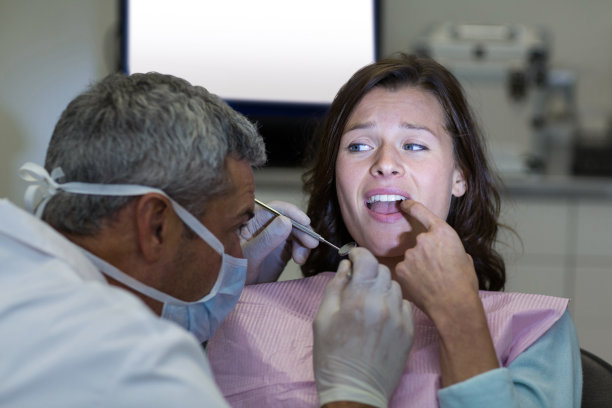The Essential Steps and Considerations Involved in the Process of Extracting a Tooth Safely and Effectively
Summary: Extracting a tooth is a complex procedure that requires careful planning and execution to ensure patient safety and comfort. This article details essential steps and considerations involved in effective tooth extraction, covering pre-operative assessment, anesthesia options, the extraction procedure itself, and post-operative care. Each section outlines critical factors to consider, which help dental professionals navigate the extraction process smoothly. By implementing these guidelines, practitioners can improve patient outcomes and minimize complications, ensuring that both the clinician and the patient have a positive experience throughout the procedure.
1. Pre-Operative Assessment Steps In Tooth Extraction

Before a tooth extraction, a thorough pre-operative assessment is fundamental. This stage involves evaluating the patient’s medical history to identify any potential risks or complications that could arise during the procedure. Conditions such as diabetes, heart disease, or blood disorders must be documented and managed appropriately. Understanding the patients health status is paramount to providing safe and effective care.
Additionally, a comprehensive dental examination must be conducted. This may include X-rays to assess the tooth structure, surrounding bone, and the presence of any infections or abnormalities. Imaging helps in planning the extraction, aiding in decisions such as whether the tooth is impacted or if surgical intervention will be necessary.
Finally, communicating with the patient about the extraction process is vital. Educating them about what to expect before, during, and after the procedure fosters trust and ensures informed consent. It is crucial to discuss pain management options, recovery expectations, and potential postoperative complications to set realistic expectations.
2. Choosing the Right Anesthesia and Sedation Techniques
Selecting the appropriate anesthesia is a critical aspect of tooth extraction. Depending on the complexity of the tooths position and the patients anxiety level, practitioners can choose between local anesthesia, sedation, or general anesthesia. Local anesthesia numbs the area around the tooth, which is suitable for simple extractions and allows the patient to remain conscious during the procedure.
For patients with high anxiety or those undergoing surgical extractions, sedation techniques can be beneficial. Intravenous sedation helps to relax the patient while still allowing them to respond to verbal cues. This approach enhances comfort without compromising the ability to monitor patient responses throughout the extraction.
General anesthesia, although less common for dental extractions, may be used for particular cases, such as multiple extractions or for patients with specific needs. The choice of anesthesia should be tailored to the individuals needs and discussed thoroughly before the procedure, ensuring a safe and painless experience.
3. The Procedure for Effective Tooth Extraction
The actual extraction procedure begins with the administration of the chosen anesthesia. Once the area is adequately numbed, the dentist can proceed with the extraction, whether its a simple or surgical extraction. For simple extractions, tools like extraction forceps are used to grip and rock the tooth free from its socket.
In surgical extractions, the dentist may need to make incisions in the gum to access the tooth, particularly if it is impacted. This step requires precision and care to minimize trauma to surrounding tissues. Often, the tooth may need to be sectioned into smaller pieces for easier removal, emphasizing the importance of careful planning and execution during this phase.
Post-extraction, the dentist ensures that all tooth fragments are removed and that the area is cleaned appropriately. Sutures may be required to close any wounds, and gauze is placed to control bleeding, ensuring patient safety and promoting healing. Documenting the procedure in the patients records is also necessary for future reference.
4. Post-Operative Care and Patient Guidance
Post-operative care is another crucial aspect of the extraction process. After the procedure, patients should receive clear instructions on care of the extraction site. This typically includes guidelines on pain management, the use of ice packs to reduce swelling, and dietary recommendations to avoid irritating the area.
Patients should be advised to avoid vigorous physical activity and drinking through straws for at least 24 hours, as these can dislodge the blood clot that forms in the socket, leading to complications. Monitoring for any signs of infection or excessive bleeding is also critical, and patients should know when to seek additional care.
Follow-up appointments may be scheduled to assess healing and remove sutures if necessary. Maintaining open communication with patients after the procedure helps ensure they feel supported and allows any concerns to be addressed promptly, reinforcing trust in the dental practice.
Summary:
Overall, tooth extraction is a multidisciplinary process that requires careful preparation and execution to ensure patient safety and comfort. By focusing on pre-operative assessment, appropriate anesthesia selection, meticulous execution of the extraction procedure, and comprehensive post-operative care, dental professionals can facilitate a smooth extraction experience. Effective communication at every stage plays a pivotal role in enhancing patient satisfaction and minimizing complications.
This article is compiled by Vickong Dental and the content is for reference only



